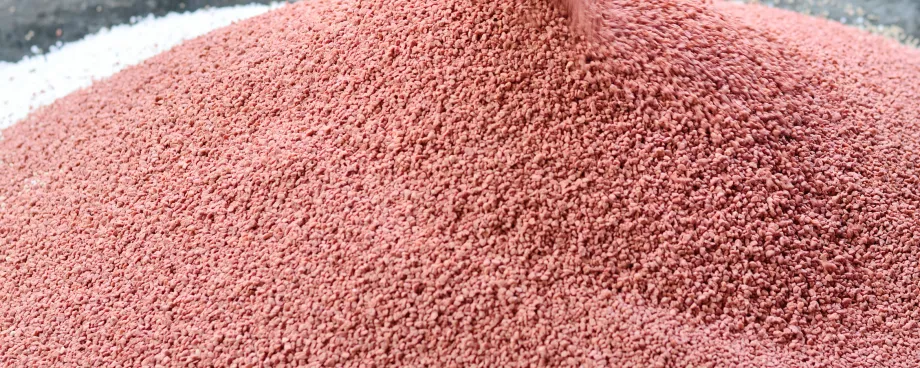| Arizona test (road dust) | A powder of specified size distribution used for calibration, quality control or filter testing. |
| atomised powder | A powder produced by the dispersion of molten material sprayed under conditions such that it solidifies as a finely divided powder. |
| ballotini | Solids glass spheres, graded in size ranges. |
| calcined powder | A powder produced or modified by dry heat treatment. |
| calibration material | A powder or suspension used to standardise instruments and methods. |
| carbonyl powder | A metal powder produced by thermal decomposition of a metal carbonyl, generally nickel or iron or a combination of the two. |
| cenospheres | Fine, hollow glass spheres, a fractional component of fly ash. |
| certified reference material | A reference material that is accompanied by, or traceable to, a certificate stating the property value(s) concerned, issued by an organisation that is generally accepted as technically competent. |
| clay | Fine grained soil that exhibits plasticity, ( putty-like properties), within a range of water contents and that exhibits considerable strength when dry. (The term has been used to designate the percentage of particles finer than 0.002 mm, (even 0.005 mm in some cases), but it is recommended that this definition is not used as, from the engineering standpoint, the properties described in the initial definition above are many time more important). |
| CRM 116 | A standard powder (ground limestone) used for the verification of consistency and tester calibration with a Jenike shear cell. See SSCT. Samples are available from BCE, ( Community Bureau of Reference to the European Union, together with certified yield loci for the Jenike test). |
| crystalline powder | A powder produced by the process of crystallisation. |
| ‘C’ test dust | A powder of specified size distribution, coarse or fine, for calibration, quality control or filter testing. (Air cleaner tests). |
| diatomatious earth | A siliceous deposit occurring as a whitish powder, consisting essentially of the frustules of diatoms. It is resistant to heat and chemical action, so is used in fireproof cement, insulating materials and as an absorbent in the manufacture of explosives. |
| dust (of occupational hygiene) | A definition given in health and safety manual is: ‘A particulate material that is, or has been, airborne and would pass through a 75 μm sieve’. This description takes no account of the particle density and shape factor. The term may be more appropriately applied to - ‘Particles of low aerodynamic diameter, that tend to become airborne in low velocity air currents and are slow to settle’. In general, particles above 20 μm are captured in the primary air passages of inhalation and are absorbed, if soluble, or eventually expelled by the system, if insoluble. Particles in the general aerodynamic particle size range of 7 to 20 μm tend to move through to upper airways of the respiratory tree and have more significant effects in irritation or asthmatic sensitisation. Particles of sub 5 μm aerodynamic size tend to pass to the foundations of the respiratory system and cause accumulative damage. Suspended particles less than 200 μm can represent an explosion hazard if a potential ignition source is present and the particle concentration is such that a flame front can propagate itself. Settled dust carries a serious hazard of causing a secondary explosion when the disturbance of a primary explosion mobilises this dust to an airborne cloud. Fugitive dust is a major source of mess, spillage and product loss, as well as raising health hazards, handling difficulties and quality issues of the product from which it originated. Typical materials in this category are: Carbon black, tobacco smoke, paint pigments, insecticides, milled flour, coal dust and fly ash. Coarse particles can be removed from entrainment by cyclones, intermediate size dust particles are generally collected by fabric or sintered sheets and very fine particles captured by electrostatic filters. |
| filter cake | A packed bed formed by a filtering process and held together by cohesive strength if dry and by surface tension of residual moisture if the result of filtering from an initially saturated mass. |
| fly ash | Finely divided ash composed of fused silica and glass, collected from electrostatic precipitators of power stations burning pulverised coal. |
| fumed powder | A powder recovered from fume. |
| grit (of occupational hygiene) | Particulate material which is or has been airborne and which would be retained on a 75 μm sieve. |
| hydrogen reduced powder | Powder produced by the hydrogen reduction of a metallic oxide or other compound. |
| hydrophilic | The property that defines a material as attracting water. Water exhibits an obtuse contact angle with hydrophilic materials. |
Glossary of Terms in Powder & Bulk Technology
2. Types of Powder
Page 1 of 2





